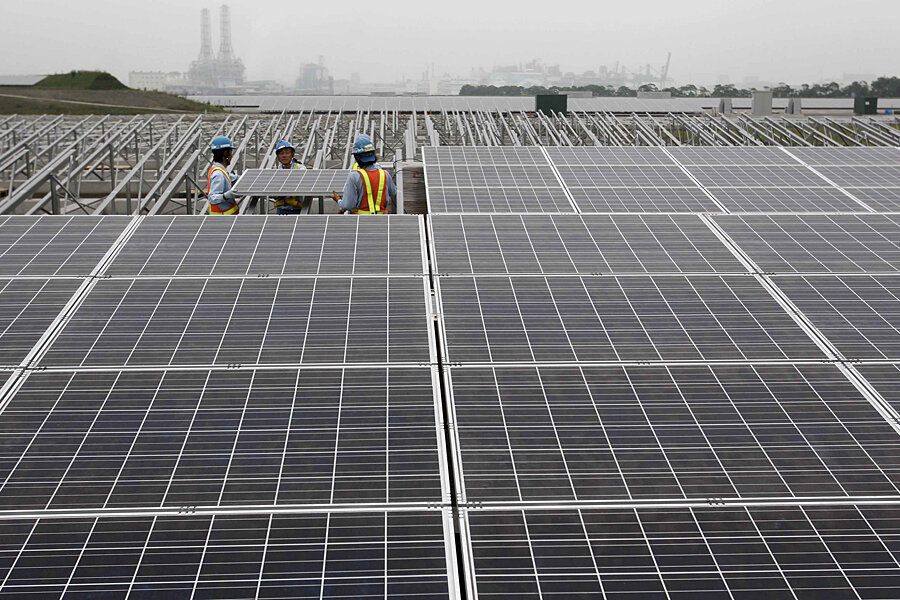Finding new angles on solar energy
Loading...
If you’ve ever looked at a flat-screen TV or computer monitor from an odd angle, you’ll get an idea of the challenge facing manufacturers of solar panels. Just as you can’t properly see the image on a flat screen from the wrong angle, a solar panel can’t capture solar radiation properly unless the angle is dead on.
Not any more, according to Glint Photonics, a new company whose technology is so intriguing that it has received funding from the US Department of Energy’s Advanced Research Projects Agency for Energy (ARPA-E).
Glint reports that it has developed a protean material that adapts its reflectivity depending on the heat from concentrated sunlight. This passive, “self-tracking” technology enables the panel to capture sunlight shining on the panel at different angles at different times of the day.
Some solar panels now use complex mechanisms, which enable manufacturers to produce smaller, less costly solar cells. But the current method involves mirrors or lenses whose angles must be changed precisely as the Sun moves across the sky. This requires an expensive structure of steel and concrete to ensure stability.
Glint says its light concentrator technology is less complex and much less expensive. It starts with a set of thin, inexpensive lenses that concentrate sunlight. It also has a sheet of glass that gathers light over its surface and can concentrate light up to 500 times more than conventional solar panel surfaces.
Here’s how it works: The glass sheet is coated on both sides with reflective materials that trap sunlight inside the glass itself. The light energy bounces back and forth between these reflective coatings within the glass sheet until it reaches the edge of the glass, where it becomes concentrated. At this edge is mounted a small solar cell that absorbs the energy and generates electricity.
Meanwhile, as the Sun moves across the sky, the material on the glass adapts to get the optimal angle for absorbing solar radiation. This cuts the need to keep the focusing mechanism pointed directly at the Sun.
Peter Kozodoy, Glint’s CEO, tells MIT Technology Review that once Glint’s solar panels hit the market, the power they generate could cost as little as 4 cents per kilowatt-hour, exactly half the cost of today’s best conventional solar panels. So far, though, the startup has been limited to testing only tiny prototypes measuring just about an inch wide.
Thanks to a $2.2 million grant from ARPA-E, though, Glint will be able to begin testing panels measuring almost a foot wide, nearly large enough for a commercial application.
Yet there’s one more hurdle, according to Howard Branz, a program director at ARPA-E. He says Glint should find a way to increase the amount of sunlight that the lenses and the glass panel deliver to the solar cells. So far, he explains, some of that light is diverted, and therefore wasted, before it reaches its goal.
Source: http://oilprice.com/Latest-Energy-News/World-News/A-New-Angles-On-Capturing-More-Sunlight.html





